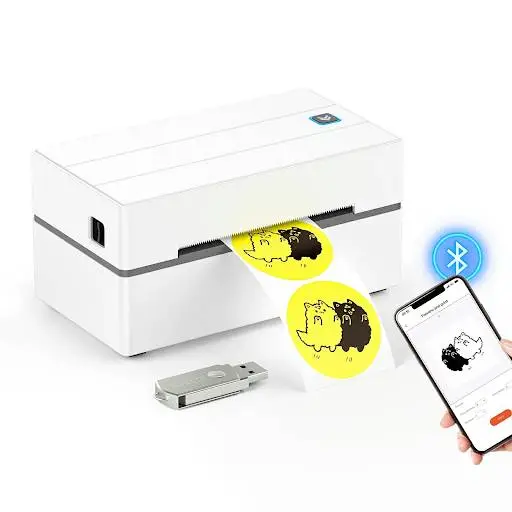In the digital age, businesses require efficiency and precision to stay competitive. One tool that has significantly improved operations across various industries is the MUNBYN thermal label printer. Whether for generating shipping labels, barcodes, or receipts, these printers offer a fast and reliable solution without the hassle of ink or toner. The growing adoption of this technology underscores its importance in retail, logistics, healthcare, and other industries where accuracy and speed are paramount. Let’s read about thermal label printers.
Must read also: A Detailed Analysis Composite Risk Management Meaning.
Understanding Thermal Printers and Their Technology
A thermal printer operates by applying heat to specially designed thermal paper, eliminating the need for ink cartridges. There are two main types of thermal printing technologies:
- Direct Thermal Printing: Uses heat-sensitive paper that darkens when exposed to the thermal printhead. Moreover, it is ideal for short-term applications like receipts and shipping labels.
- Thermal Transfer Printing: Transfers ink from a ribbon onto various surfaces, creating longer-lasting prints suitable for asset labeling, compliance tags, and product identification.
Industries That Benefit from Thermal Printers
The use of thermal printers is widespread across multiple sectors due to their reliability and cost-effectiveness. Here’s how different industries utilize this technology:
Retail and Point-of-Sale Systems
- Speedy receipt printing to enhance customer experience.
- Barcode and price tag printing for efficient inventory management.
- Seamless integration with POS systems for smooth transactions.
Logistics and Warehousing
- High-speed printing for accurate package tracking.
- Durable labels for warehouse storage and inventory organization.
- Reduced downtime with low-maintenance technology.
Healthcare and Pharmaceuticals
- Secure labeling for patient wristbands and medical records.
- Prescription and sample labeling to minimize errors.
- Clear, scannable barcodes to ensure accuracy in documentation.
Food and Beverage Industry
- Expiration date and nutritional labeling for compliance.
- Branded packaging labels for product presentation.
- Inventory labeling to prevent waste and manage stock efficiently.
Key Advantages of Using a Thermal Label Printer
Thermal printing technology offers numerous advantages that make it a preferred choice for businesses. Here are some of the key benefits:
1. Cost-Effective Operations
Unlike traditional printers, a thermal printer does not require ink or toner, significantly reducing ongoing costs. The only consumable required is thermal paper or labels, making it an economical choice.
2. Speed and Efficiency
Thermal printers are designed for high-speed printing, which is particularly useful in industries where time-sensitive documentation is necessary. This leads to improved customer service and streamlined operations.
3. Low Maintenance and Durability
With fewer moving parts and no ink cartridges to replace, thermal printers require minimal maintenance. Furthermore, this ensures uninterrupted workflow and long-term savings on repairs and replacements.
4. High-Quality, Smudge-Free Prints
The precision of thermal printing technology produces sharp, clear prints that resist smudging. This is especially important for barcode scanning, where clarity is essential for accurate product identification.
5. Wireless and Mobile Printing Capabilities
Modern thermal printers, including wireless options, allow users to print on the go. A Munbyn thermal printer, for instance, enables businesses to print labels via Bluetooth, reducing dependency on wired connections and improving efficiency in mobile work environments.
Choosing the Right Thermal Label Printer for Your Business
Selecting a thermal printer involves evaluating business needs and operational requirements. Consider these factors when making a decision:
- Printing Volume: High-volume businesses should opt for robust and high-speed models.
- Connectivity Options: Wireless thermal printers offer flexibility for mobile and remote operations.
- Print Resolution: High-resolution printers ensure crisp, clear, and professional-looking labels.
- Durability: Opt for thermal transfer printers for applications requiring long-lasting prints.
- System Compatibility: Ensure the printer integrates with your current POS or inventory management software.
Final Thoughts
The integration of thermal printers in business operations has revolutionized printing by making it faster, more efficient, and cost-effective. Whether it’s for labeling, tracking, or transactions, these devices simplify workflow and enhance productivity. With innovations such as Bluetooth connectivity, models like the Munbyn thermal printer provide businesses with greater flexibility and ease of use.
Investing in a high-quality thermal printer can significantly improve operational efficiency and reduce long-term costs. As industries continue to evolve, thermal printing technology will remain an essential tool for businesses seeking accuracy, speed, and reliability in their printing solutions.


